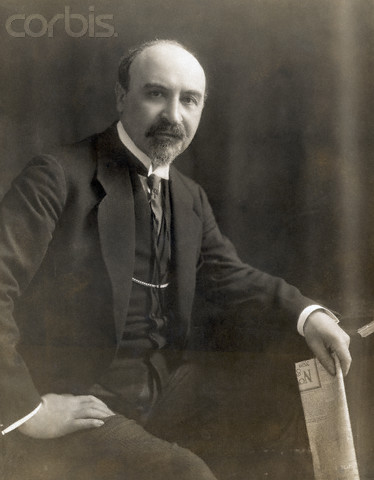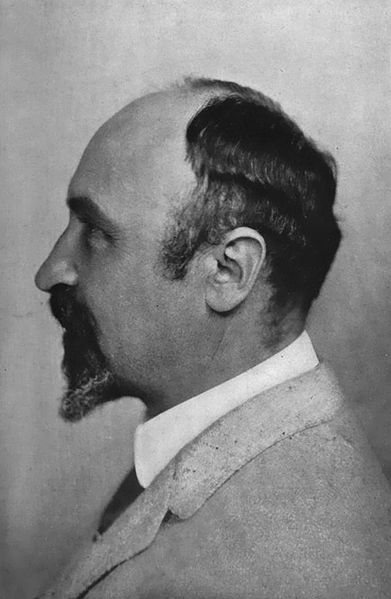<Back to Index>
- Chemist Leo Hendrik Baekeland, 1863
- Composer Johann Nepomuk Hummel, 1778
- Prince of Orange Maurits of Nassau, 1567
PAGE SPONSOR



Leo Hendrik Baekeland (Sint-Martens-Latem (near Ghent), November 14, 1863 - February 23, 1944) was a Belgian chemist who invented Velox photographic paper (1893) and Bakelite (1907), an inexpensive, nonflammable, versatile, and popular plastic.
Leo Beakeland was born in Sint-Martens-Latem near Gent, Belgium. Baekeland was the son of a cobbler and a maid. He told The Literary Digest: "The name is a Dutch word meaning 'Land of Beacons.'" He graduated with honours from the Gent Municipal Technical School and was awarded a scholarship by the City of Gent to study chemistry at the University of Ghent, where he acquired a PhD summa cum laude at the age of 21. He was subsequently appointed associate professor of chemistry in 1889, and married Céline Swarts, the daughter of his head of department.
In 1889 Baekeland honeymooned in New York, where he met Richard Anthony, of the E. and H.T. Anthony photographic company. Baekeland had already invented a process to develop photographic plates using water instead of chemicals, and was interested in moving to America; Anthony saw potential in the young chemist and offered him a job.
Baekeland worked for the Anthony company for two years, and in 1891 set up in business for himself as a consulting chemist. However, a spell of illness and disappearing funds made him rethink his actions and he decided to return to his old interest of producing a photographic paper that would allow good pictures to be taken in artificial light. After two years of intensive effort he perfected the process to produce the paper, which he named Velox. At the time the US was suffering a recession and there were no investors or buyers for his proposed new product, so Baekeland became partners with Leonardi Jacobi and established the Nepera Chemical Company in Nepera Park, Yonkers, New York.
In 1899 Baekeland was invited to meet George Eastman,
who immediately offered him $1,000,000 for his Velox process.
Baekeland accepted at once. With a portion of the money he
purchased "Snug Rock", a house in Yonkers, New York, and set up his own
well equipped laboratory.
When asked why he entered the field of synthetic resins, Baekeland answered "to make money". His first objective was to find a replacement for shellac (made from the excretion of lac beetles). Chemists had begun to recognize that many of the natural resins and fibers were polymers. Baekeland began to investigate the reactions of phenol and formaldehyde.
He first produced a soluble phenol - formaldehyde shellac called
"Novolak" that never became a market success. He then turned to
developing a binder for asbestos, which at that time was molded with rubber.
By controlling the pressure and temperature applied to phenol and
formaldehyde, he could produce his dreamed-of hard moldable plastic:
bakelite. The official name of Bakelite is polyoxybenzylmethylenglycolanhydride.
Baekeland officially announced his achievement at the February 1909 meeting of the New York section of the American Chemical Society.
In
1922, after patent litigation favorable to Baekeland, the General
Bakelite Co., which he had founded in 1910, along with the Condensite
Co. founded by Aylesworth, and the Redmanol Chemical Products Co.
founded by L.V. Redman, were merged into the Bakelite Corporation.
The invention of Bakelite marks the beginning of the Age of Plastics. Bakelite was made from phenol (then known as carbolic acid) and formaldehyde. These can be mixed, heated, and then either molded or extruded. The Nobel Prize in Chemistry winning German Adolf von Baeyer had
experimented with this material in 1872, but did not complete its
development. Bakelite took the industry by storm after 1907.
Bakelite was the first plastic invented that held its shape after being heated. Radios, telephones and electrical insulators were
made of Bakelite because of its properties of insulation and
heat resistance. Soon it penetrated nearly all branches of industry.
Baekeland was awarded the Franklin Medal in 1940.
As
Baekeland got older he became more eccentric, getting into fierce
battles with his son and presumptive heir over salary and other issues. He sold the General Bakelite Company to Union Carbide in
1939 and, at his son's prompting, he retired. He became a recluse,
eating all of his meals from cans and becoming obsessed with developing
an immense tropical garden on his winter estate in Coconut Grove, Florida. He died of a cerebral hemorrhage in a sanatorium in Beacon, New York. Baekeland is buried in Sleepy Hollow Cemetery in Sleepy Hollow, New York.
Leo Baekeland was the grandfather of Brooks Baekeland, whose wife Barbara Daly Baekeland was murdered by their son, Antony in 1972.